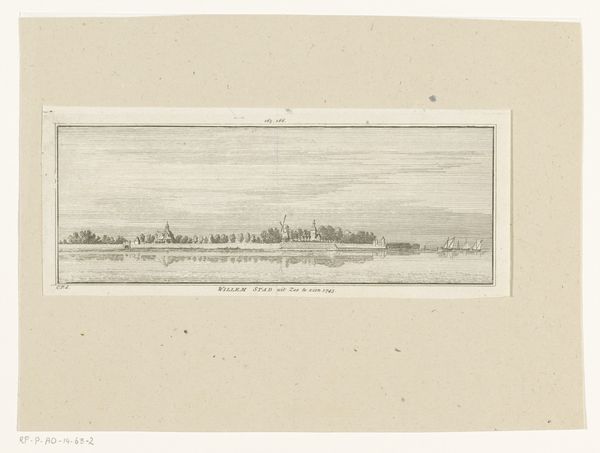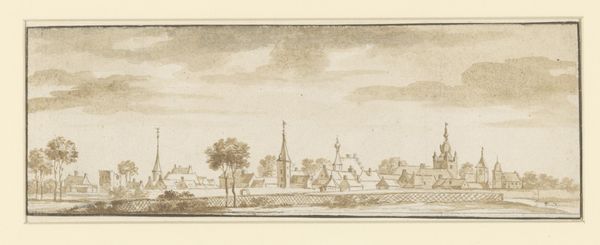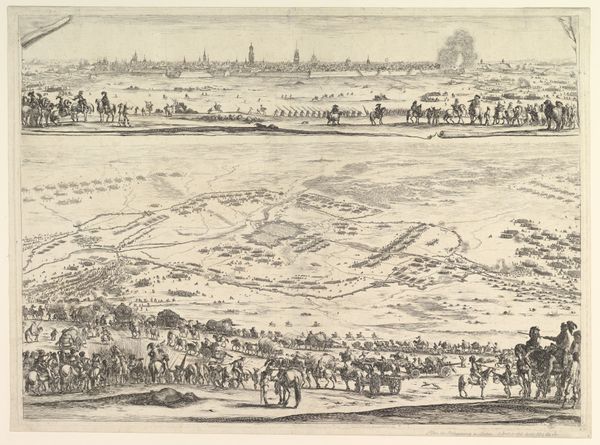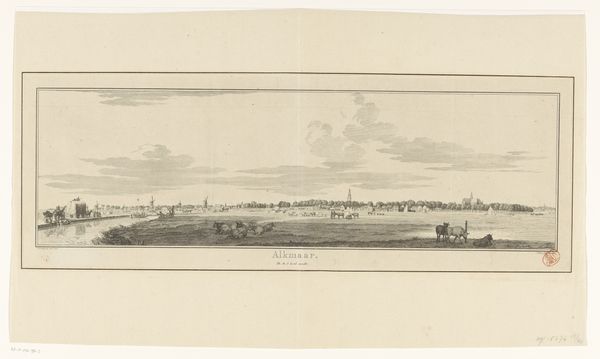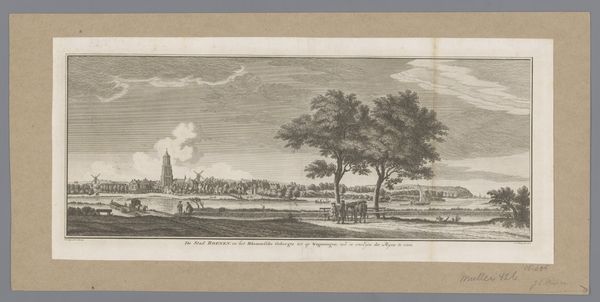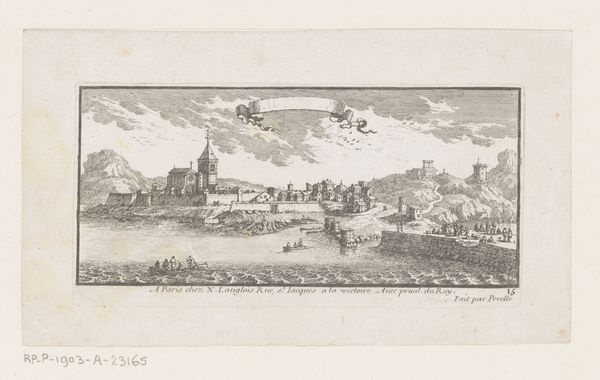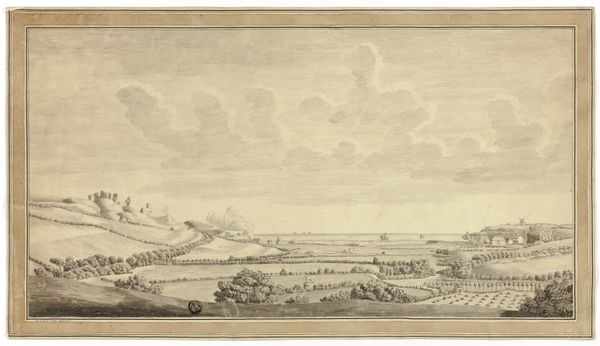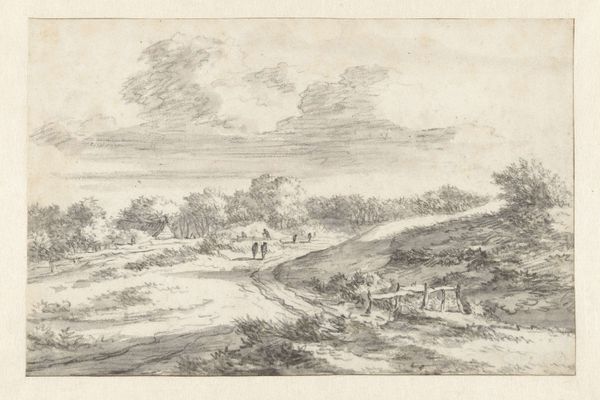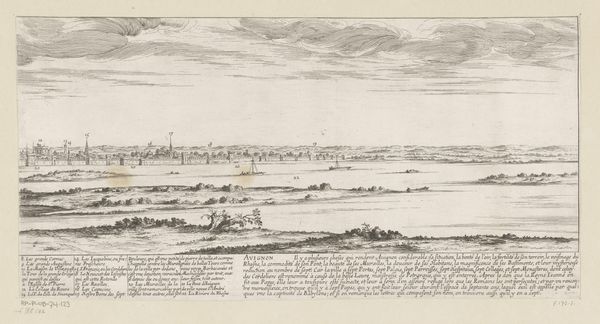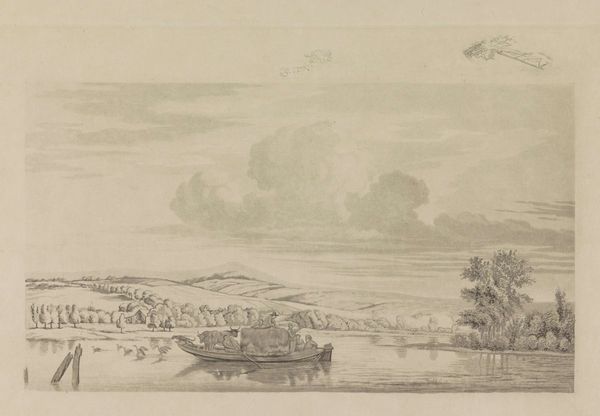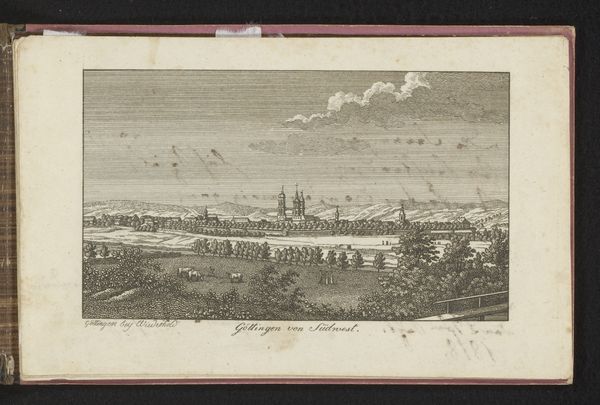
drawing, print, paper, engraving
#
drawing
#
dutch-golden-age
# print
#
landscape
#
paper
#
cityscape
#
engraving
Dimensions: height 110 mm, width 232 mm
Copyright: Rijks Museum: Open Domain
Hendrik Spilman created this print of Laren in North Holland sometime in the 18th century using etching and engraving. The network of fine lines describe the village in detail, with a precision only achieved through the artisan's skillful hand. Spilman was a master of graphic arts, translating his observations into detailed landscapes and cityscapes. His technical ability allowed him to capture the nuances of light and shadow, creating depth and atmosphere. The etching process involves coating a metal plate with a waxy, acid-resistant substance, then drawing through the coating with a sharp tool. The plate is then immersed in acid, which bites into the exposed metal. Engraving is used to enhance the lines. These printing techniques were highly valued for their capacity to reproduce images, making art accessible to a wider audience, which ties in with the burgeoning commercial culture of the 18th century. Prints like these were not just aesthetic objects, they acted as a form of documentation, and a way to distribute information about the world. Looking closely, we can see how traditional craft intersects with the rise of a more modern, visually driven society.
Comments
No comments
Be the first to comment and join the conversation on the ultimate creative platform.
